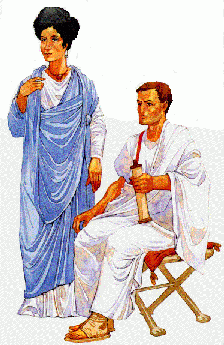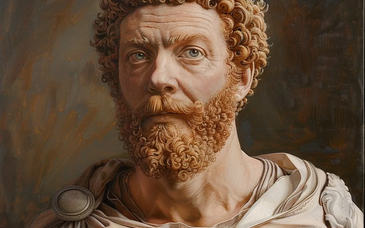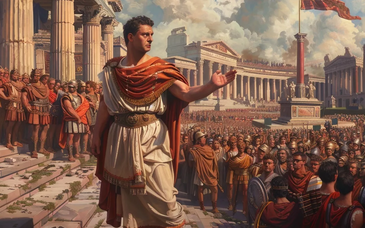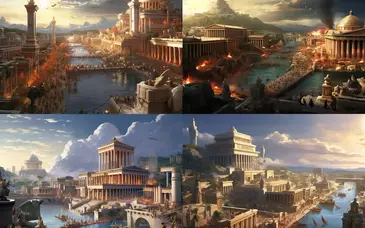After learning about where the Romans lived and what hobbies they enjoyed, you might be wondering what roles the men, women, and children played in ancient Rome. Keep reading to learn about what you, your friends, and your family would have been expected to do in ancient Rome.
What would the men in your family have done in ancient Rome?
Roman men were the most distinguished people in ancient Rome. Even their clothes were more beautiful so all Roman citizens would recognize that the men were of a higher status than other Romans. All men wore togas, long sheets of expensive material that were folded over one shoulder and draped around the body. The most distinguished men, for example the senators, all wore togas that had a stripe of purple or gold on them since these were the colors of royalty. All men had short hair and shaved the hair from their arms so they looked as clean as possible.
The men were the masters of the house and the family. During the day, they worked outside of the home. Rich men had roles very different from the poor men of Rome. If you had been a rich man, you would have begun your day by putting on your toga and eating a breakfast of bread, cheese, honey, and water. Before leaving for town, you would pray at the household shrine. The rich man would then begin his work, which might include writing letters to other Romans, seeing clients, and going to the forum to meet other businessmen. After a light lunch, you might take a nap, get a haircut, and finish your work for the day. In the late afternoon, all of the Roman men went to the public bathes, then home to enjoy a dinner with friends.
Poorer men were craftsmen, shopkeepers, or farmers. If you had been a poor man in ancient Rome, you would have started the day at first light. Since you could not afford to buy much food, you would eat only bread for breakfast. The rest of the day included working at the workshop or in the fields. After dinner, poor men would go to sleep so they would be ready to wake up early and work the next day.

Illustration courtesy of John James
What would the women in your family have done in ancient Rome?
Women in ancient Rome, like the men, wore long togas made of silk in the summer or wool in the winter. Roman women always wore makeup and jewelry and always fixed their hair to look beautiful.
Unlike men, women were expected to stay at home every day so they could complete the chores around the house and watch the children while their husbands were at work. Very few women were allowed to hold jobs such as being a teacher or doctor.
Women with wealthy husbands lived differently from those with poor husbands. For example, if you had been a wealthy woman in Rome, you would have usually spent a day planning a dinner party to take place when your husband got home. These women began the day with prayers at the household shrine, then ordered their slaves to begin dinner, fix your hair, makeup, and clothes to look beautiful, and clean the house while you relaxed. When your husband returned from work, you would begin greeting and entertaining the guests of the dinner party. Poor women in Rome, on the other hand, woke up at the same time as their husbands and worked in the house or fields all day. Usually poor women had to complete a great deal of work since they did not have the money to pay for the help of slaves. Women were not nearly as respected as men in ancient Rome.
What roles would you and your friends have had in ancient Rome?
Boys and girls in ancient Rome dressed in togas like those of their parents, but usually were short instead of long.
Children of wealthy families in ancient Rome usually started school when they were seven years old. Boys stayed at school longer than girls and learned different things. For example, girls who went to school learned how to spin, weave, cook, and clean so they would be able to care for a house when they were married. Girls of poor families learned all of these things at home since they could not afford to go to school. Almost all boys, except for those of very poor families went to school to learn how to read, write in Latin and Greek, do math, and make speeches. These skills were necessary for boys who wished to get a job in the government.
When girls were 14 years old, their fathers planned a marriage for them. When they married the man chosen by their father, the girls left their house to live with their new husband and his family. Boys were not allowed to marry until they were 15 years old. At this time, they were also allowed to vote and get a job.





